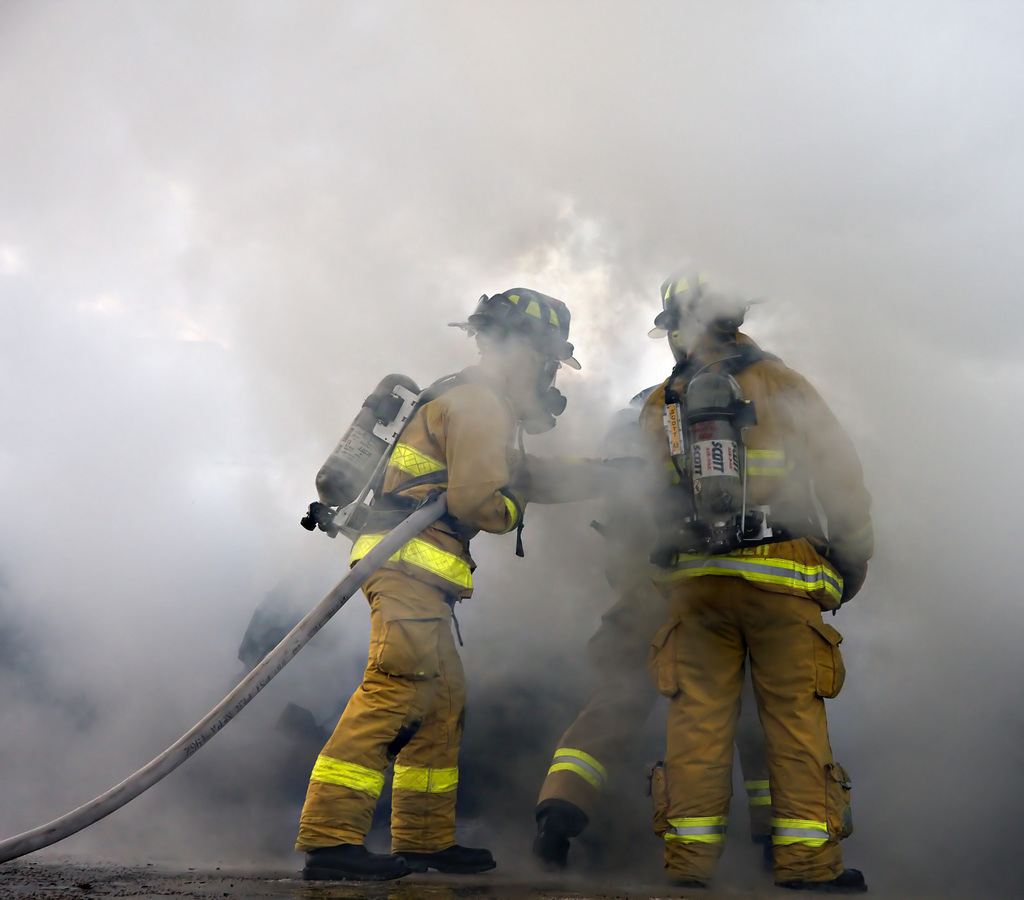Who can get RADS?
Anyone can get RADS - it is caused by exposure to highly concentrated chemicals, smoke, fumes, vapors, chemical laden dust or steam etc. This can be from an explosion, chemical spill, leak, fire etc. RADS usually develops quickly and often symptoms stay for a long period of time. There is no latency period and it is not an allergic reaction.
- - - - - - - - - - - - - - - - - - - - - - - - - - - - - - - - - - - - - - - - -
The diagnostic criteria for RADS:-
1. Absence of pre-existing respiratory disorder, asthma symptomatology or a history of asthma in remission and
exclusion of conditions that can simulate asthma.
2. Onset of asthma after a single exposure or accident.
3. Exposure is to an irritant vapor, gas, fumes or smoke in very high concentrations.
4. Onset of asthma occurs within minutes to hours and always less than 24 hours after the exposure.
5. Finding of a positive methacholine challenge test (<8 mg/ml) following the exposure.
6. Possible airflow obstruction on pulmonary function testing.
7. Another pulmonary disorder to explain the symptoms and findings is excluded
Source - Brooks SM (2014) Irritant-Induced Asthma and Reactive Airways Dysfunction Syndrome (RADS)
Go to Table 1
https://www.omicsonline.org/open-access/irritantinduced-asthma-and-reactive-airways-dysfunction-syndrome-rads-2155-6121.1000174.php?aid=26512
- - - - - - - - - - - - - - - - - - - - - - - - - - - - - - - - - - - - - - - - -
The diagnostic criteria for RADS:-
1. Absence of pre-existing respiratory disorder, asthma symptomatology or a history of asthma in remission and
exclusion of conditions that can simulate asthma.
2. Onset of asthma after a single exposure or accident.
3. Exposure is to an irritant vapor, gas, fumes or smoke in very high concentrations.
4. Onset of asthma occurs within minutes to hours and always less than 24 hours after the exposure.
5. Finding of a positive methacholine challenge test (<8 mg/ml) following the exposure.
6. Possible airflow obstruction on pulmonary function testing.
7. Another pulmonary disorder to explain the symptoms and findings is excluded
Source - Brooks SM (2014) Irritant-Induced Asthma and Reactive Airways Dysfunction Syndrome (RADS)
Go to Table 1
https://www.omicsonline.org/open-access/irritantinduced-asthma-and-reactive-airways-dysfunction-syndrome-rads-2155-6121.1000174.php?aid=26512
-----------------------------------------------
Sadly there were many firefighters and residents who got RADS after 911 ..
follow the link below to read more.
"Persistent Hyperactivity and Reactive Airway Dysfunction in Firefighters at the World Trade Center"
Read More: http://www.atsjournals.org/doi/full/10.1164/rccm.200211-1329OC#.VQmStuGd6Yk
-----------------------------------------------
Here is an interesting article from 2008 by the Oxford Academic website explaining "Which agents cause reactive airways dysfunction syndrome (RADS)? A systematic review"
Source - Occupational Medicine, Volume 58, Issue 3, May 2008, Pages 205–211, https://doi.org/10.1093/occmed/kqn013 Published: 27 February 2008
-------------------------------------------
Some of the occupations that are prone to exposures may include the following:-
Firefighters Manufacturing Cleaners Farmers
Painters Miners Police Hospital Staff
Paramedics
Baker Welder & Emergency Services
AND PEOPLE AT HOME -----> Over the years contact has been made by people who have been diagnosed with RADS after inhaling very strong fumes in their homes. This has been after very strong chemicals had been used and there was no or limited ventilation. Having good ventilation and allowing time for fumes or vapors to clear is extremely important.













